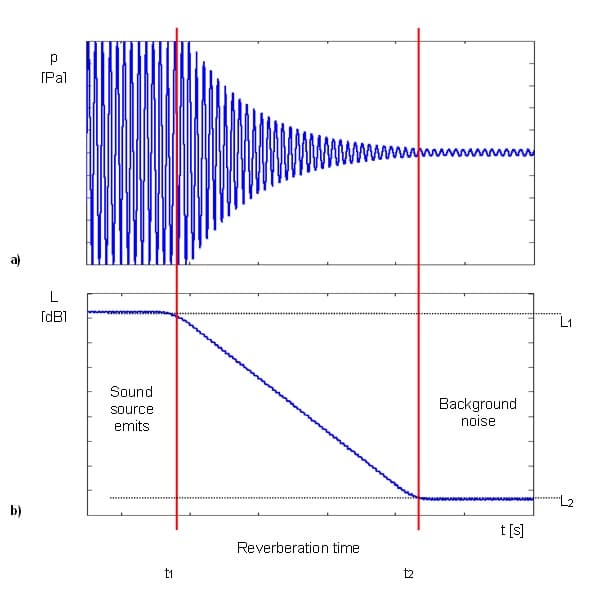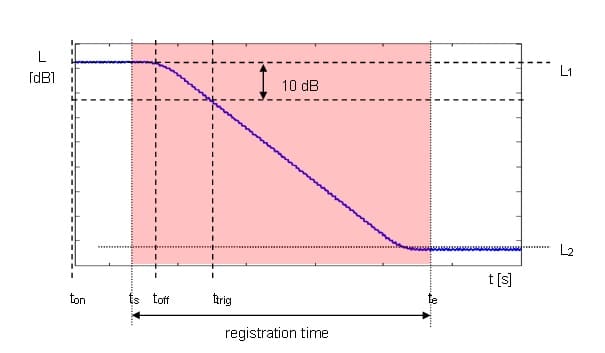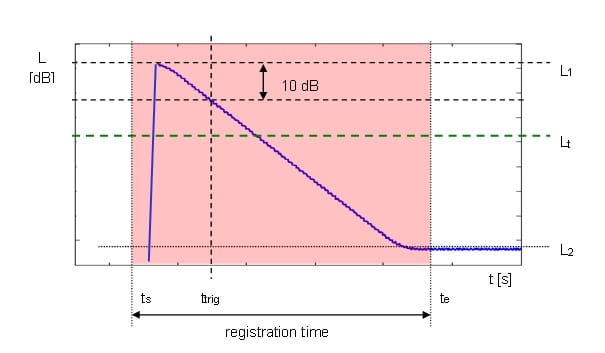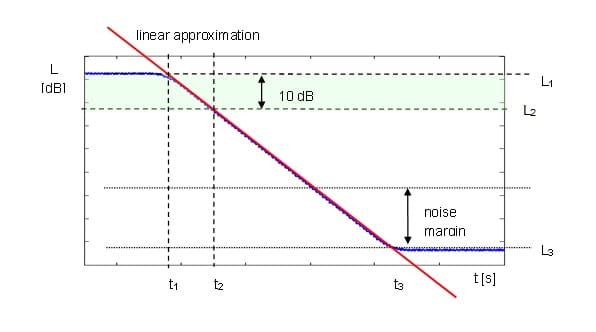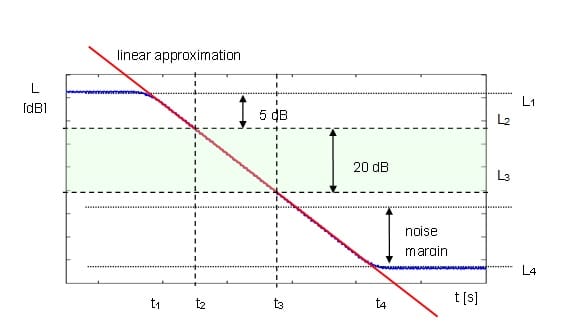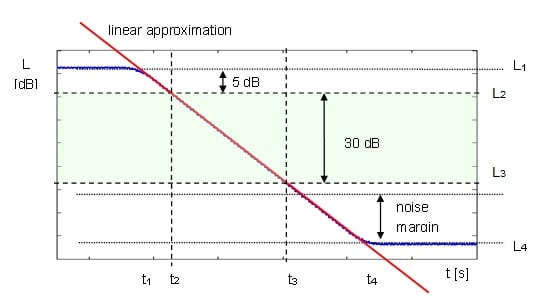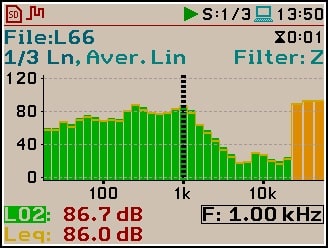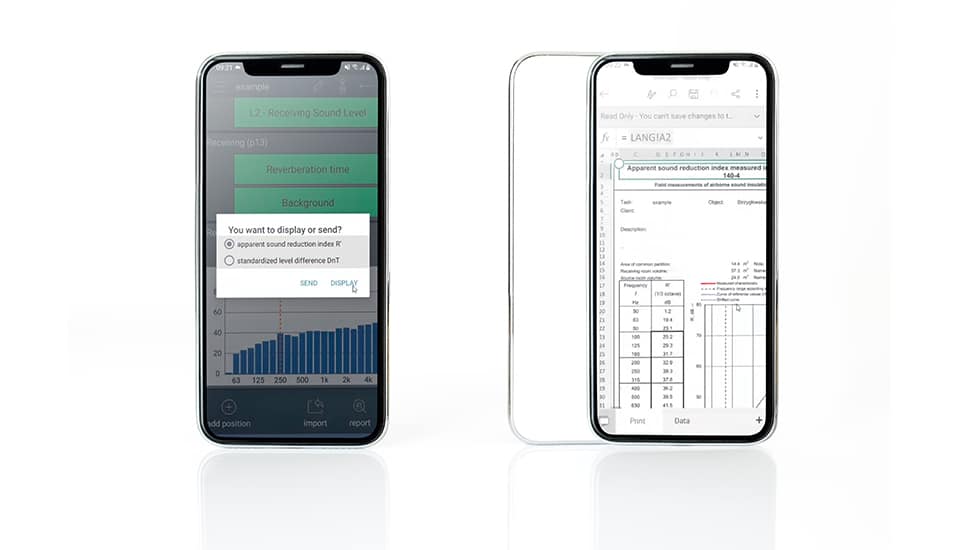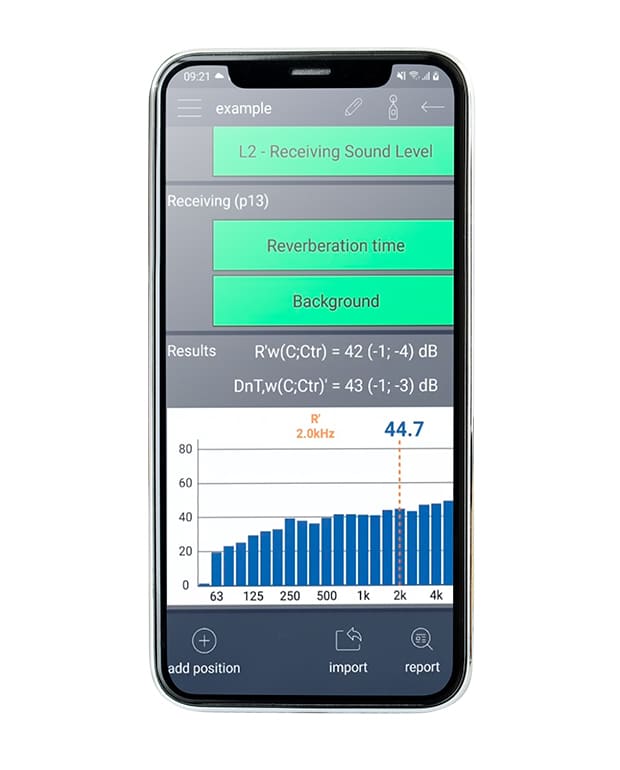RT60 reverberation time is the main room acoustic parameter. Following ISO 3382, it is the duration required for the sound energy in a room to decrease by 60 dB after the source emission has stopped. The values of RT60 may range from fractions of a second to a few seconds and depend upon the size of the room and the nature of the materials used in its construction.
Following the Springer Handbook of Acoustics by Thomas D. Rossing, “reverberance is probably the best known of all subjective room acoustic aspects. When a room creates too much reverberance, speech loses intelligibility because important details (consonants) are masked by louder, lingering speech sounds (the vowels). For many forms of music, however, reverberance can add an attractive fullness to the sound by bonding adjacent notes together and blending the sounds from the different instruments/voices in an ensemble. The reverberation time T which is the traditional objective measure of this quality was invented 100 years ago by W.C. Sabine.”
Reverberation time is used to determine the required acoustics for a room. The reverberation time RT60 in a room is determined by the absorptive properties of the reflecting surfaces and the distances between them. The purpose of this measurement is to obtain an objective, quantitative indication of the acoustic quality of a room in a building. In an empty room, sound waves reflect off of the walls, ceiling, and floor, and these reflections build up over time. This build-up of sound is known as reverberation, and it can be a major problem in large rooms with hard surfaces.
When designing a room for optimal acoustics, it is important to ensure that the reverberation time is appropriate for the intended use of the room. If the reverberation time is too long, the speech will be unintelligible and music will sound muddy.
On the other hand, if the reverberation time is too short, the room will sound sterile and uninviting. By carefully considering the absorption characteristics of the materials used in a room, it is possible to achieve ideal reverberation times for any given application.
Depending on the use of the room, more direct and less indirect (reflected) sounds are required. For example with a long reverberation time, a speech becomes less understandable and background noise levels increases, and with a shorter reverberation time background noise reduces but voice muffles.
Reverberation time can be used for calculating the amount of absorbent material required to achieve the desired room acoustics. In this approach, RT60 is measured first without the absorbent material in the room, and, then with absorbent material.
The volume and total absorption of a room have an impact on the reverberation time. The total absorption is obtained by summing the absorption of all the surfaces in the room, i.e. walls, ceiling, floor, and all the furniture. The absorption of each surface is the product of the area of the surface with its absorption coefficients. The absorption coefficients depend on the material and the frequency and the angle of incidence of the sound energy.
